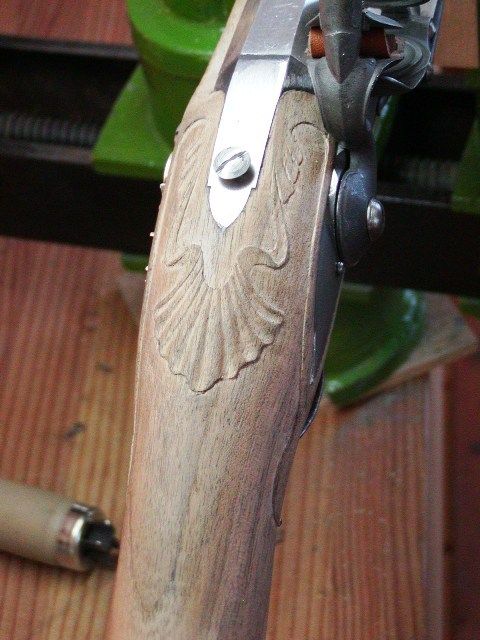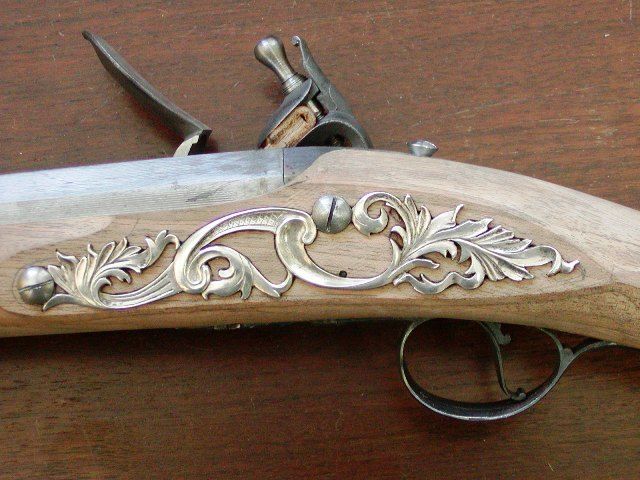Hi Staggerwing,
Thanks for the kind words. I am still learning how to do wire work efficiently. Currently, I draw the design on the wood and then use a carving knife and round chisels to lightly score the design on the wood. The round chisels help create smooth curves. Then I use the hack saw stabbing tools almost exclusively. Using the scored lines as guides, I stab the hacksaw chisel into those lines to create the groove for the wire. I use stabbing tools with 1/16", 1/8", and 1/4" long blades. Occasionally, I will stab with a gouge chisel after using the stabbing tools to clean up a ragged curve. Many good wire workers use flat and curved chisels instead of the smaller hacksaw stabbing tools I use. I find that the longer chisels are awkward and I have to move around a lot to see where the chisel edge is positioned on the wood. The small stabbing tools allow me to huddle over the work and I can see what I am doing much better. In addition, the shoulders on the tools set the correct depth of cut for the depth of the wire I use. Finally, I made up a tool from a small screw driver. It has a rounded end and thin blade. I use it to nudge the wire to smooth out curves before wetting the wood and filing the excess silver off. I anneal the hacksaw blades where I am going to cut them off for the tang that fits into the wooden dowel. I don't anneal the blade part, just grind off the teeth and the blade to shape.
dave


